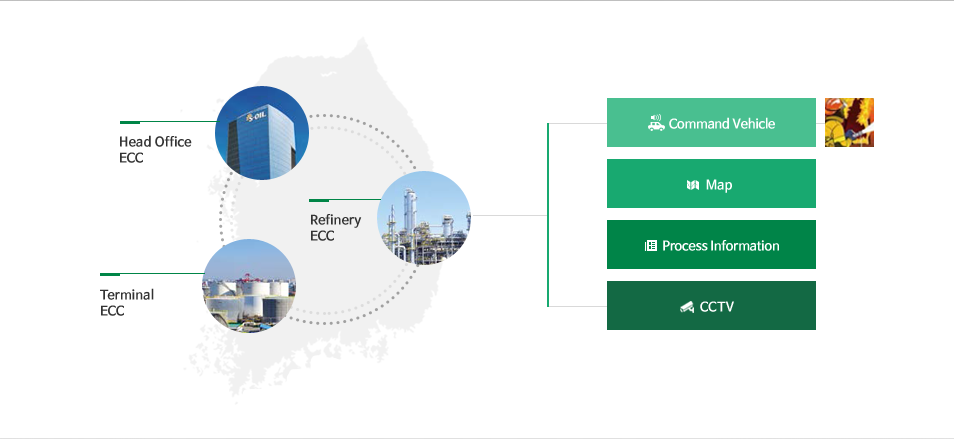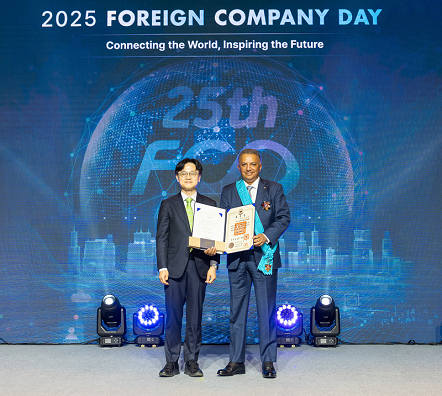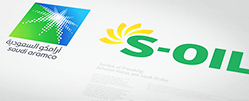Optimizing Resources
S-OIL establishes clear financial measurements and maintains a high credit rating to ensure optimal capital efficiency.
Establishing Optimal Financial Measurements
S-OIL’s overall management goal is to maximize its corporate value through capital efficiencies and the optimization of its financial structure. To do this, we establish financial measurements with goals set at an appropriate level to ensure that our financial structure is optimized in terms of both capital efficiency and financial soundness. These measurements include ROCE (Return On Capital Employed), EBITDA (Earnings Before Interest, Taxes, Depreciation and Amortization), Debt-Equity-Ratio, Current Ratio, Debt/EBITDA, and RCF (Retained Cash Flow)/Debt, which represents a company’s ability to repay its loans from the proceeds of its business activities and is carefully watched by credit rating agencies. Besides these measurements, we have benchmarked financial indicators in terms of profitability, efficiency, and stability, and develop other financial measurements that assess the financial situation of the company through gap analyses of its goals and its actual achievements.
Maintaining a High Credit Rating
A company should be able to raise sufficient capital in any situation. The ability to finance capital in a timely manner is important, particularly when instability exist in the financial market as it does now. S-OIL has maintained a high credit rating by communicating frequently with credit rating agencies and managing the core measurements used to determine credit ratings. It also maintains a close relationship with prominent domestic and overseas banks to ensure access to a sufficient and stable line of credit.
Meanwhile, in January 2015, Saudi Aramco, S-OIL’s largest shareholder, bought up all Hanjin Energy’s shares in S-OIL. It has made S-OIL more strategically significant for Saudi Aramco, and also makes Saudi Aramco more likely to support S-OIL financially going forward, which, as a result, has helped us maintain an industry-leading credit rating.
Domestic Credit Ratings
NICE and KIS rated S-OIL AA for the issuance of its corporate bond for the first time in 2003. Our rating has remained unchanged since they upgraded it to AA+ in June, 2007.
Overseas Credit Ratings
International credit rating agencies upgraded S-OIL's credit outlook in 2015, followed by domestic credit rating agencies' upgrade in March 2016. Moody's and S&P cited "S-OIL's strategic importance to Saudi Aramco, increasing possibility of business and financial support from the parent company, and promising operating results and favorable market conditions" for upgrading S-OIL's credit ratings.
Credit Ratings (as of December 31, 2015)
S-OIL : Domestic Credit Ratings, Overseas Credit Ratings Table
| Overseas |
Domestic |
| Moody’s |
S&P |
Korea Ratings |
NICE Investors Service |
Korea Investors Service |
| Baaa2 |
BBB |
AA+ |
AA+ |
AA+ |
Increasing Shareholder Value
Communicating Better with Shareholders and Investors
S-OIL is fully engaged in diverse IR activities to provide stakeholders with business information in a transparent manner. The trust built between our corporation and investors through IR activities translates into increased shareholder value and enhanced reputation regarding management, thus leading to valuable stock price and stable management.
S-OIL made a total of 47 disclosures in 2014 to provide investors with fair and swift management information without any violations or non-disclosure of any kind. The Company also held 541 IR activities to communicate with investors at home and abroad during the year. Furthermore, the Company provided major disclosure announcements and regulatory changes to employees via an intranet bulletin board, promoting employees’ understanding of disclosure related regulations.
IR Meeting Unit : times
IR 미팅 현황 : 구분, 2012, 2013, 2014 내용 테이블입니다.
| Classification |
2012 |
2013 |
2014 |
| Investors’ Meetings |
937 |
765 |
541 |
| Hosting of Non-deal Roadshows |
7 |
8 |
8 |
| Participation in Conferences |
17 |
14 |
10 |
| Conference Call |
4 |
4 |
4 |
Transparent Dividend Distribution
At S-OIL, we make sustainable growth and shareholder return our top priority and has paid an appropriate level of dividend in consideration of profit and cash flow. With such dividend principle and sound financial structure, the company has set its dividend payout ratio at 50% for the past several years.
As part of its shareholder-oriented management, S-OIL has paid interim dividends since 2000. This incorporates S-OIL’s management philosophy of fostering a shareholder-driven management culture in which both the company and its shareholders thrive, by satisfying the needs of long-term shareholders who value dividends, rather than investors who pursue short-term capital gain.
According to the company’s policy to pay dividend by considering profit and cash flow, the dividend in 2014 was set lower compared to the previous year since the company recorded loss in in exceptional circumstances due to the plunge in oil price.
Managing Capital Efficiently
In order to manage the funds it has raised most efficiently, S-OIL emphasizes the need for the balanced management of its working capital, systematic budgeting, and the efficient distribution of its assets.
Efficient Capital Structure
It is of great importance to establish an efficient capital structure in order for a company to achieve sustainability in the business environment where uncertainties abound. Efficient capital structure should be supported by financial soundness. To this end, S-OIL has identified key financial indices and monitors them round-the-clock. Furthermore, the Company endeavors to manage key indicators with an impact on credit rating. S-OIL maintains stable credit ratings through good communications with credit rating agencies despite a negative outlook on the overall oil refining industry. It allows us to secure competitive funding conditions when raising working capital and investments, thereby solidifying an effective capital structure.
Efficient Distribution of Economic Resources
To maximize corporate value, economic resources created through efficient capital structure should be effectively distributed. S-OIL ensures an optimal distribution of economic resources into profitable investment options by evaluating the appropriate level of hurdle rate, the criteria for investment feasibility studies, based on Weighted Average Cost of Capital (WACC) of the Company every month. This enables us to maximize corporate value as we channel corporate resources into high-yield investments, exceeding shareholder and creditor demand. In addition, S-OIL seeks to efficiently manage corporate resources through systematic budget management and execution to align resources distribution to the Company’s long-term goals, while striving to maximize corporate value by preventing waste of resources through transparent budget execution and monitoring process.
Furthermore, despite the unprecedented performance deterioration in 2014, everyone in S-OIL had done all they could, to not harm the interests of shareholders and other stakeholders by taking austerity measures as required and implementing company-wide profit improvement programs.
Capital Financing for Securing New Growth Engines
S-OIL has endeavored to come up with an optimal capital financing plan for the RUC&ODC project, the biggest since its foundation. For example, the Company thoroughly examined and compared not just the traditional way of raising capital in financial markets at home and abroad but also new and innovative measures. We also closely consulted with our major shareholder Saudi Aramco with regard to the influence which the financing for a new major project may have on the Company’s financial stability. Through this process, we were able to devise an optimal plan to raise capital, obtaining the approval for investment in the BOD meeting held in September 2015.
And then, we designated the state-run Korea Development Bank as the main agent for capital financing and concluded a syndicated loan agreement, while staging proactive IR activities for financial institutions to showcase the feasibility of the project and our sustainability. As a result, despite tough conditions in the financial market, we succeed in attracting a major participation of domestic and foreign financial institutions, concluding the syndicated loan agreement of KRW 2.1 trillion with 9 financial institutes in December 2015. This agreement is all the more meaningful in that the capital was raised as part of the “business investment promotion program” run by the Government, which has recognized our contribution to the national economy and job creation with our major facility investment.
In another effort to secure financial flexibility for the project period, S-OIL issued corporate bonds of KRW 400 billion at a low interest rate while signing a financial agreement valued at KRW 600 billion with four domestic and foreign banks. By capitalizing on capital raised by an optimal plan and cash flows generated by the favorable business environment, S-OIL will push ahead with the largest facility investment project in its history without setbacks.
Managing Foreign Exchange Risk
S-OIL’s liabilities and debts in foreign currencies, including accounts payables due to crude oil imports, bankers’ usance financing, and accounts receivable from product exports, are continually exposed to foreign exchange rate risks. Since 60% of our production volume is exported in US dollars, while 40% is sold in Korean won (based on the current international price with the application of the exchange rate), the company’s income is also influenced by the exchange rate.
To minimize risk from fluctuating exchange rate, we endeavor to manage our foreign exchange position (i.e., liabilities in foreign currencies minus assets in foreign currencies) at an optimal level, making sure that the foreign exchange profits and losses from our foreign currency liabilities and the impact of the exchange rate on our operating income will balance each other out.
We use currency forwarding contracts but all derivatives trades must be made within the limits of the loss amounts and quantities set by the BOD’s regulations. Trading in derivatives for the purpose of bargaining requires approval from the BOD.
We will increase our monitoring of foreign exchange markets to minimize risks arising from fluctuations in currency exchanges and augment our financial stability by improving the management of our liabilities in foreign currencies
Systematic Risk Management
The Company is operating an integrated risk management system in order to effectively respond to risks in all aspects of the economy, society, and the environment. Our integrated risk management system covers all stages from risk identification to responses into a single integrated process, thereby allowing all employees to carry out optimal responses to any given situation.
Responses to Key Risks
For timely recognition of risks and effective response to crises, S-OIL classifies risks into five types depending on their nature: strategy, markets, finance, compliance and operations. Also, through early identification of key risks and a round-the-clock monitoring that keeps in check all risk factors, S-OIL stands ready to take swift and systematic measures as set forth in the manual when an emergency breaks out. With this company-wide system in place, S-OIL prevents potential risks from turning into reality, while minimizing damage.
Early Warning System (EWS)
Based on an exhaustive analysis of the extensive database of business activities, S-OIL has developed and put in place a round-the-clock EWS to promptly respond to unexpected risks since 2012. The EWS automatically identifies any irregularities against pre-constructed scenarios, allowing an immediate team-based response to the risk. In 2015, monitoring items of the EWS were divided into independent management items and those requiring cooperation and inspection by relevant departments depending on the importance of scenario, further enhancing voluntary risk management activities by frontline departments.
Introducing of Emergency Control Program (ECP)
Failure to take early action in an unpredictable crisis event due to changes in business environment may bring about great damage or aggravated risk. To prevent this, S-OIL has introduced the Emergency Control Program (ECP), which can facilitate pre-emptive measures through the real-time communication channel.
In 2014, for the ECP, S-OIL drew up regulations and procedures to stipulate R&R of each related organization. Then the Company completed the establishment of the Emergency Control Center (ECC) equipped with a video conference system as a real time communication channel both at the company-wide level and at the regional level.
In the random drill conducted in 2015 aside from the regular session, site response teams and the top management were able to quickly contain the situation by communicating seamlessly in real time and making perfect orders. S-OIL promises to develop the leading emergency response capabilities by conducting company-wide emergency drills for various situations.













